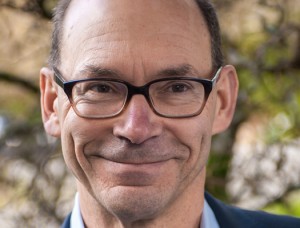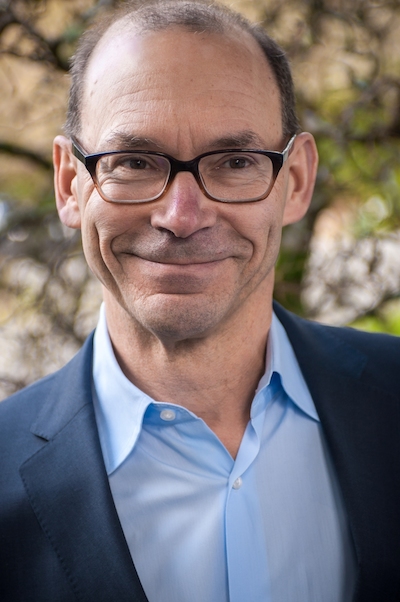By Diana Brement, Jewish Sound Columnist
Speaking from Miami, about halfway through his book tour for “The Family: Three Journeys into the Heart of the Twentieth Century,” David Laskin was pleased with how the trip was going.

Published by Viking, “The Family” is Laskin’s own family’s saga of “ur-20th-century Jewish stories,” he says. He puts his ancestors squarely in the midst of history and traces the “three branches that became two.”
Laskin has heard equally compelling tales from his tour audiences.
“They thank me for writing the book and then they want to share what happened to their uncle, their aunt,” which creates a “sense of connection and community.”
The tour has been a Jewish homecoming of sorts for Laskin, who was born in Brooklyn and grew up in Great Neck, N.Y. The first event was at the Eldridge Street Synagogue (and museum) on the Lower East Side, “one of the most beautiful and one of the most historic” synagogues in our country, he says. Laskin felt it “was a sacred spot…[possibly] holy to my grandparents and their generation.” Today he makes his home here in Seattle.
At Shabbat services at Pittsburgh’s Rodef Sholom, Laskin spoke about the book, struck by how well it worked as a sermon, “how we have suffered, how we have endured, what we have in common.”
Laskin makes it clear that he is not conventionally religious, but says writing the book and touring have created a stronger connection to Judaism.
“I am a secular Jew,” he says, “but I’ve come to feel that category does not adequately describe who I am.”
“My grandfather, great-grandfather, great-great-grandfather…were scribes,” and Laskin says he is a type of scribe. “I write history, I write family stories. In writing the book, I came to feel that I am also a religious Jew.” Even if he doesn’t attend synagogue, he adds, it “doesn’t mean I don’t revere Judaism, I don’t revere Torah and the survival of our people.” The writing drew him to “the most meaningful and the most powerful parts of our religion.”
To write the story, Laskin took two “roots” trips, one to Israel to meet his Israeli cousins, and one to Belarus to see where his family had once lived — both those who survived through emigration and those killed in the Holocaust.
At the Western Wall, “I felt the generations were bridged,” he says, and “felt how much my ancestors would have wanted to be there.”
He felt that again at Rodef Shalom, “moved by the beauty of the prayers, the beauty of the songs…I felt this was my place.”
A freelance journalist whose pieces often appear in the New York Times, Seattle Met and the Seattle Times, Laskin describes in the introduction how the book started with a bubbe meise, Yiddish for apocryphal story. Because the Russian form of the family’s name was Kaganovich, a cousin suggested that “Stalin’s notorious henchman Lazar Kaganovich was a relative.”
Laskin was taken by the idea that while his great aunt Itel (Ida) Rosenthal was building Maidenform Bra Company, her cousin was engineering a famine that killed over 7 million people in Ukraine.
It wasn’t true, Laskin quickly learned from his Israeli cousin, “but that got me going.”
“The real gift” of his research, he says, was a “treasure trove of letters” Laskin’s cousin Benny had in Israel, most “written by people who were killed in the Holocaust.” Together the cousins, who have become great friends, translated letters from Yiddish into Hebrew and English. Back in Seattle, Laskin got Hebrew translation help from local tutor and Israeli native Aza Hadas, who offered insights as well as translation.
Laskin and his wife Kate O’Neill moved to Seattle in 1993 when she was offered a job at the University of Washington law school. He loves “the beauty, the recreation, the library systems, the gardening,” he says. “I even love the weather.”
He’s written two other books: A World War I history, “The Long Way Home,” and for kids, “The Children’s Blizzard.”
Laskin also enjoys Seattle’s “vibrant literary community,” where he counts many local writers as friends. He got both guidance and inspiration from local history writer Jackie Williams who herself has done extensive genealogical research, and who steered Laskin to JewishGen.org, “a great resource.”
“The Family” was featured on Amazon as one of October’s best books, which the author attributes partly to the allure of “the Maidenform connection,” a great American success story about “a four-foot-eleven Jewish chain-smoking tycoon,” who “started out as a socialist and ended up as the Henry Ford of brassieres.”
What Laskin does so well in “The Family” is insert his family’s personal and intimate story into the larger world history that swirled around them. Outside — and sometimes inside — the walls of their houses, pogroms raged, countries fought wars, and borders shifted. The line of demarcation between Germany and Russia in World War I cut through one of the family’s shtetlach. The world changed. Young people were drawn to Zionism or Socialism. Yet inside their houses they tried to keep the traditions of a thousand years alive until history drove them from their homes.
